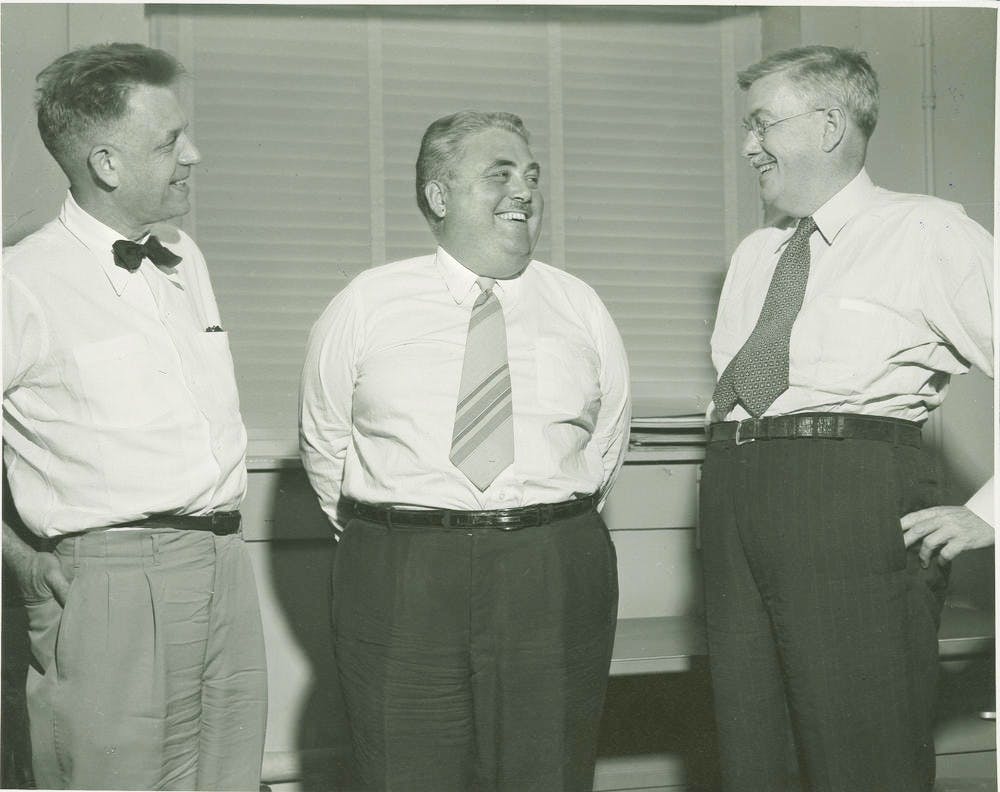Part of the Kinsey Institute for Research in Sex, Gender and Reproduction's 70-year celebration September 16 took a look back at how its existence began with the work of deceased IU professor and researcher Dr. Alfred C. Kinsey.
The celebration included a segment called "Kinsey Institute History," which focused on Kinsey and his work leading up to his death in 1956.
Kinsey's push for sex research began with a marriage course he chaired at IU, said Hallimeda Allinson, history of gender and sexuality graduate student.
"During the marriage course, he started to look at all of the literature on sex and sexuality, and he found it to be paternalistic and full of rigid rules that didn’t necessarily make any sense and weren’t based in scientific research as far as he was concerned," Allinson said.
During the marriage course, Kinsey began to have students ask questions he didn't necessarily have the answers to, Allinson said. Kinsey then commenced his own form of research asking students about their histories. This interviewing method grew as Kinsey traveled to get sexual histories from all over the country.
Kinsey's research eventually became two volumes titled, "Sexual Behavior in the Human Male" and "Sexual Behavior in the Human Female," which reported on the sexual history of around 12,000 men and women.
The findings in Kinsey's first book "Sexual Behavior in the Human Male," revealed statistics such as 50 percent of married men practice infidelity and 37 percent of all men in the sample, 6,000, reported having orgasms from same-sex contacts or stimuli, Allen said during "Kinsey Institute History." The finding about same-sex contacts led Kinsey to ponder bigger questions.
“That finding led Kinsey to question rather fiercely fixed ideas of sexual identity based on sexual orientation," Allen said during the talk. "These findings caused him to question using the nouns heterosexuality and homosexuality as if humanity was deeply divided into two separate species from birth."
Allen said this led to the creation of the Kinsey Scale. Instead of labeling a person as heterosexual, homosexual or bisexual, Kinsey and fellow sexologists Wardell Pomery and Clyde Martin created this heterosexual - homosexual rating scale that ranged from zero to six. Zero is "exclusively heterosexual," and six is "exclusively homosexual." The scale was first published in "Sexual Behavior in the Human Male."
Both volumes gained a great deal of traction. The Kinsey Reports became New York Times best-sellers, and Americans knew Kinsey's name and his importance, Allen said during the talk.
Following the publication of these successful volumes, Kinsey had intentions to continue sex research, Allen said.
"The very last thing he wrote in 1956 before he died, dated in July, was the third part of a chapter on a book he simply called 'Abortion,'" Allen said during the talk. "It’s pretty clear that this was going to be the third Kinsey Report."
While Kinsey himself never got to complete this volume, his successor, Paul Gebhard, wanted to finish Kinsey's projects, Allinson said. The book on abortion became "Pregnancy, Birth and Abortion," and Gebhard also finished a book about sex offenders, which Kinsey had begun research on as well.
Beyond being known as a meticulous and driven worker, the first word to come to mind when describing Kinsey as person is compassionate, Allinson said.
"One of the things that I’m doing right now is reading all of his correspondences," said Allinson. "I’ve gotten through about half of the correspondences that are with just the general public, random people who wrote into him with their problems, their concerns and all that type of stuff. And he answered every single letter. I think he was a very compassionate person who was driven by some of the difficulties that just ordinary people felt around sex and sexuality."






